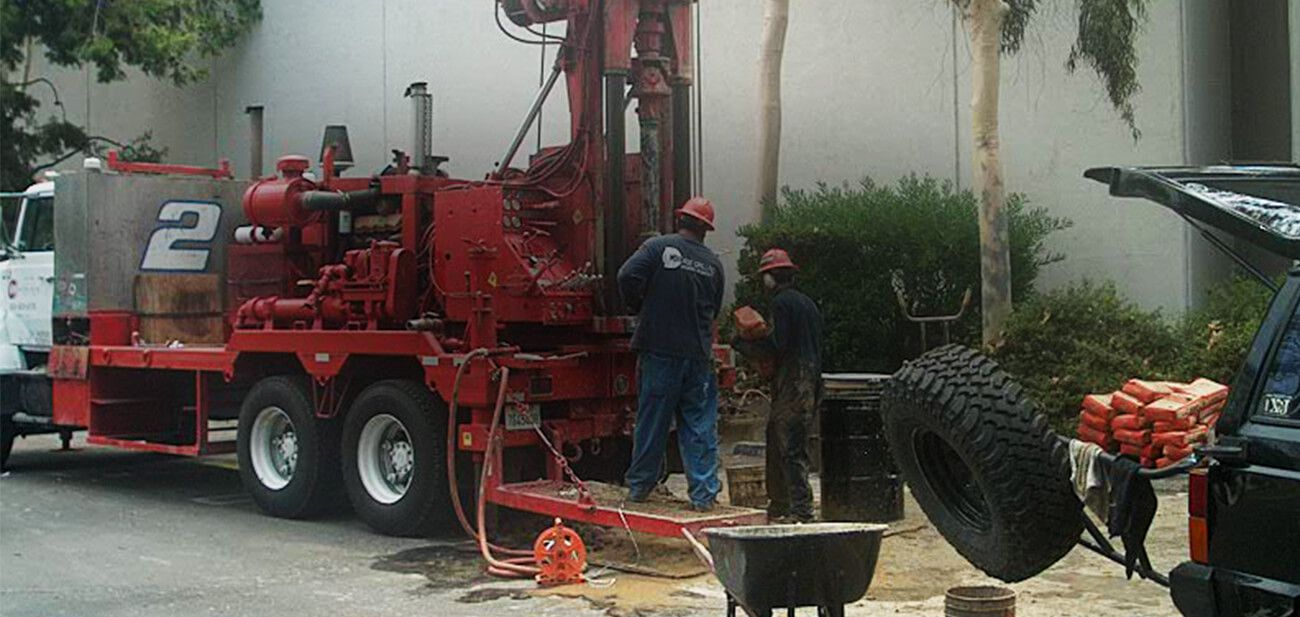The Future of Geotechnical Engineering: Exactly How Geotheta is Shaping Market Criteria
The Future of Geotechnical Engineering: Exactly How Geotheta is Shaping Market Criteria
Blog Article
Navigating Geotechnical Services: The Value of Geotechnical News, Soil Compaction Testing, and Sidewalk Design in Ensuring Structural Integrity
In the realm of engineering and construction, the structure whereupon a framework is built plays a pivotal duty in its long life and security. Geotechnical services, including the manufacturing of geotechnical reports, conducting dirt compaction screening, and thorough sidewalk layout, serve as the foundation of making certain architectural integrity. These important components not only lay the groundwork for successful project implementation however additionally alleviate possible risks that might endanger the stability and sturdiness of a building and construction job. As we dive into the elaborate interaction between geotechnical evaluation and architectural stability, the important nature of these solutions in securing against unforeseen difficulties becomes progressively obvious.
Significance of Geotechnical Records
Geotechnical reports play an important role in giving detailed insights right into the soil and rock problems of a site, crucial for guaranteeing the architectural honesty of building and construction projects. These reports are a fundamental part of the initial website investigation procedure, offering beneficial details that affects the design, building and construction techniques, and general usefulness of a project. By analyzing dirt make-up, stability, and possible threats such as landslides or sinkholes, geotechnical reports make it possible for designers to make informed choices pertaining to structure design and building methods.
Additionally, geotechnical records aid in threat evaluation and reduction approaches, assisting job stakeholders understand the potential challenges that might arise during construction. Through extensive assessment and analysis of geotechnical information, engineers can develop solutions to resolve site-specific concerns, making certain the long-lasting stability and security of the structure. Eventually, the extensive nature of geotechnical records works as a vital structure for successful task preparation and execution, reducing threats and improving total job outcomes.

Function of Soil Compaction Testing
How vital is the assessment of dirt compaction through screening for guaranteeing the security and durability of building tasks? Dirt compaction screening plays an important duty in the construction market by making sure that the dirt below a framework is properly compacted to stop and sustain the designated lots settlement (geotheta). Properly compressed soil provides a stable structure for structures, roadways, and other frameworks, reducing the risk of structural failure and expensive repairs in the future
Dirt compaction testing includes determining the thickness of the dirt and contrasting it to the optimum density achievable for that specific soil kind. If the dirt has actually been compressed completely to sustain the planned framework, this assists engineers figure out. By carrying out dirt compaction examinations during building, designers can recognize any areas that require extra compaction and take rehabilitative measures before waging more building and construction.
Relevance of Sidewalk Design
Examining dirt compaction with screening not only guarantees the stability and long life of building and construction jobs yet additionally lays an important structure for effective pavement layout. Proper sidewalk style takes into consideration factors such as traffic tons, ecological conditions, dirt features, and material residential or commercial properties to create a durable and sustainable surface area. By including data from soil compaction examinations, engineers can determine the proper density, products, and layering for the sidewalk to withstand anticipated stress and anxieties and keep structural stability over time.
Guaranteeing Structural Stability
These reports provide vital info on dirt structure, security, and prospective dangers, assisting in educated decision-making during the layout and construction best site phases. Furthermore, conducting detailed soil compaction testing is essential to ensure that the dirt beneath structures or pavements is appropriately compressed to sustain the intended lots and avoid settlement concerns.
Furthermore, implementing robust sidewalk layout methods is necessary for making sure the structural integrity of roadways, car park, and various other paved surfaces. Correct sidewalk style considers variables such as website traffic volume, environmental problems, and soil characteristics to develop long lasting and risk-free transportation infrastructure. By sticking to these methods and utilizing geotechnical solutions properly, building jobs can boost their structural honesty, lessen risks of failing, and guarantee the lasting performance of the built atmosphere.
Safeguarding Versus Risks
In light of the vital relevance positioned on ensuring structural stability with careful focus to product option and dirt screening, guarding versus threats becomes paramount in maintaining the stability and long life of building jobs. Threats in construction jobs can stem from numerous resources, consisting of natural disasters, dirt instability, or layout imperfections.
In addition, developing contingency plans and implementing robust monitoring systems can aid mitigate unpredicted threats that might develop during building. Regular inspections and quality assurance actions need to be performed to guarantee that materials are used based on specs and that construction techniques follow industry standards. By proactively recognizing and attending to potential threats, building and construction jobs can enhance their strength and reduce the likelihood of architectural failures, ultimately making certain the security and long life of the developed environment.
Verdict

Dirt compaction screening plays a crucial function in the building market by making sure that the soil below a structure is appropriately compressed to sustain the desired lots and stop negotiation.Dirt compaction testing involves gauging the thickness of the soil and comparing it to the optimum thickness attainable for her comment is here that specific soil kind (geotheta). By carrying out soil compaction tests throughout building, engineers can identify any kind of areas that require added compaction and take rehabilitative steps before continuing with additional construction
In addition, carrying out extensive soil compaction screening is important to guarantee that the dirt underneath pavements or structures is appropriately compacted to sustain the intended lots and stop negotiation problems.
In final thought, geotechnical reports, dirt compaction testing, and sidewalk layout play critical duties in ensuring the architectural stability of building and construction jobs.
Report this page